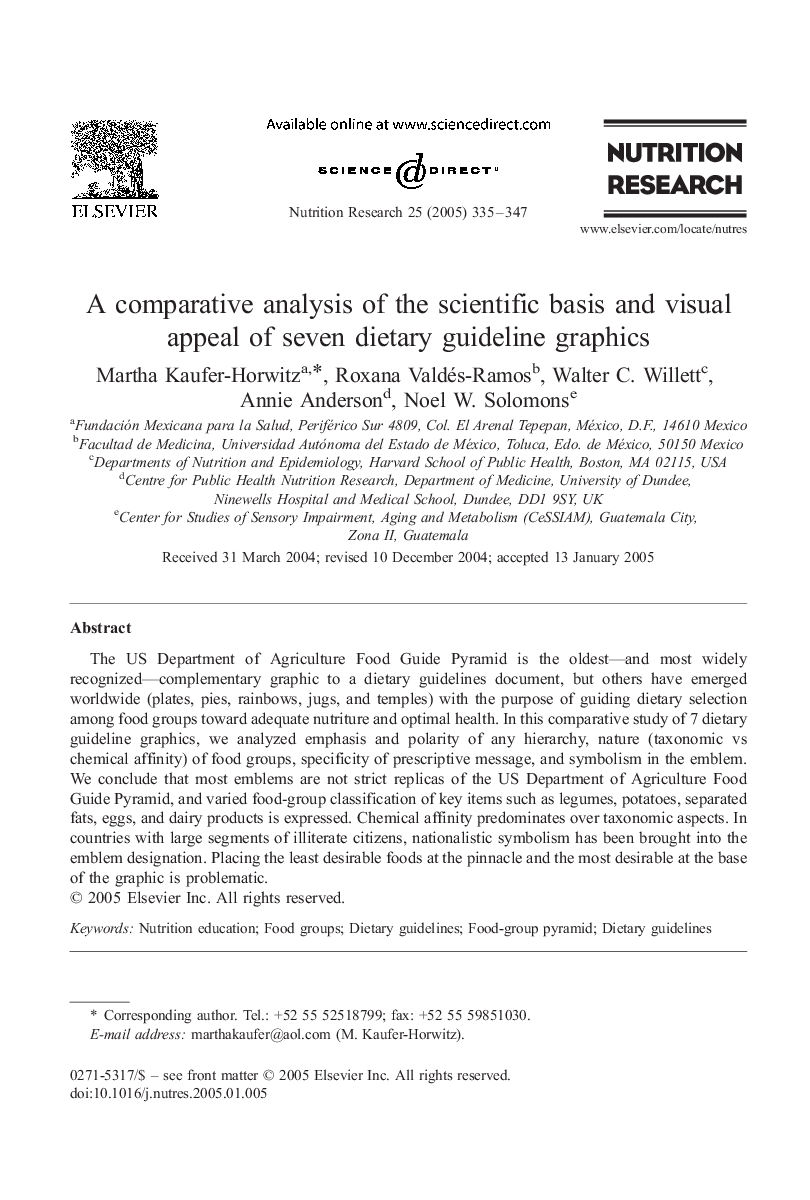| Article ID | Journal | Published Year | Pages | File Type |
|---|---|---|---|---|
| 9119464 | Nutrition Research | 2005 | 13 Pages |
Abstract
The US Department of Agriculture Food Guide Pyramid is the oldest-and most widely recognized-complementary graphic to a dietary guidelines document, but others have emerged worldwide (plates, pies, rainbows, jugs, and temples) with the purpose of guiding dietary selection among food groups toward adequate nutriture and optimal health. In this comparative study of 7 dietary guideline graphics, we analyzed emphasis and polarity of any hierarchy, nature (taxonomic vs chemical affinity) of food groups, specificity of prescriptive message, and symbolism in the emblem. We conclude that most emblems are not strict replicas of the US Department of Agriculture Food Guide Pyramid, and varied food-group classification of key items such as legumes, potatoes, separated fats, eggs, and dairy products is expressed. Chemical affinity predominates over taxonomic aspects. In countries with large segments of illiterate citizens, nationalistic symbolism has been brought into the emblem designation. Placing the least desirable foods at the pinnacle and the most desirable at the base of the graphic is problematic.
Related Topics
Life Sciences
Biochemistry, Genetics and Molecular Biology
Endocrinology
Authors
Martha Kaufer-Horwitz, Roxana Valdés-Ramos, Walter C. Willett, Annie Anderson, Noel W. Solomons,
